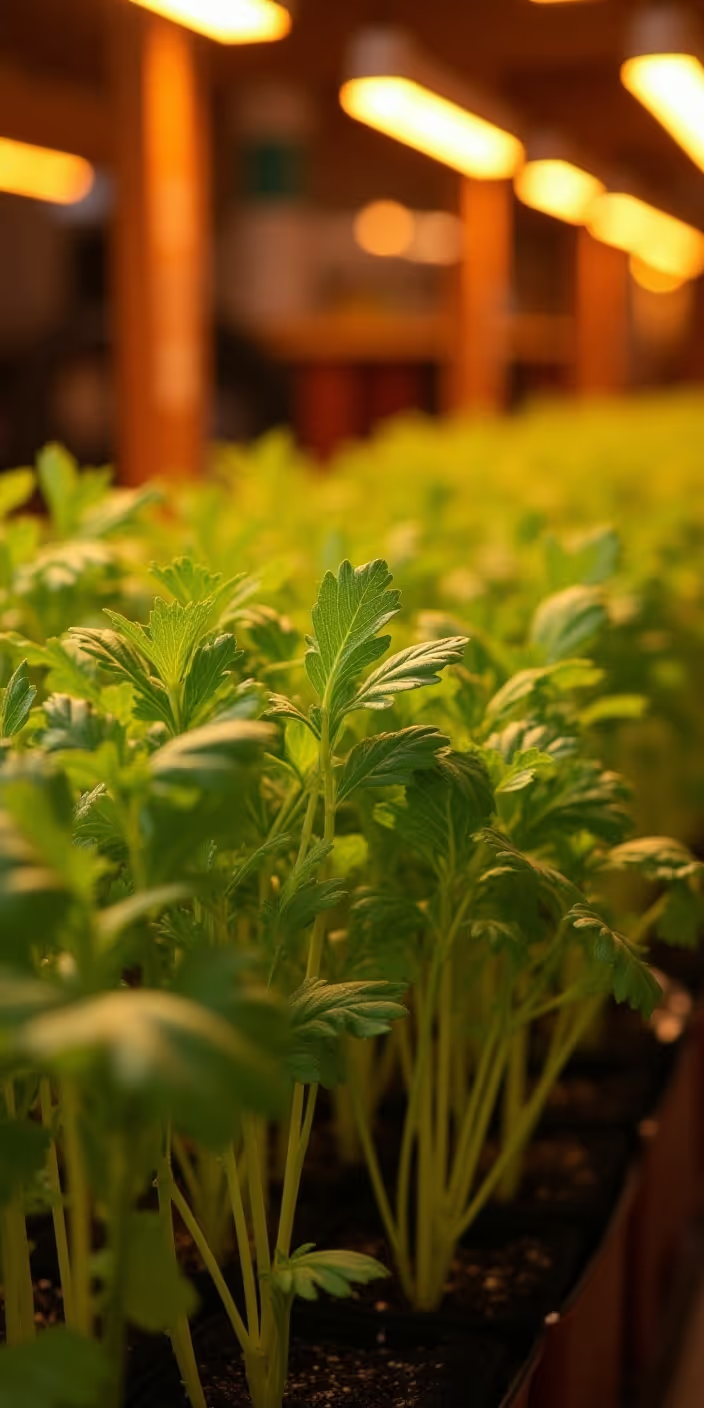Arugula is a plant that can be successfully grown in different ways, whether in soil, hydroponics, or aeroponics. Each of these methods has its own specifics and advantages, and the choice of the best option depends on the conditions and goals of the grower. In soil, arugula adapts easily and can be grown in almost any garden, while hydroponics and aeroponics offer precise control over growing conditions and can be more efficient in controlled environments.
Arugula in Soil
The traditional way of growing arugula is in soil, where the plant can develop a root system that absorbs nutrients and water from the earth. Arugula prefers well-drained soils that are not too heavy. Ideally, the soil should be rich in organic matter but also be sufficiently aerated to allow the roots to grow freely.
Advantages:
- Natural growing conditions: Growing arugula in soil allows the plant to thrive in a natural environment, where its root system can absorb nutrients from the soil.
- Simplicity and low cost: This method is economically efficient, as it doesn't require specialized equipment. All necessary resources can be provided at minimal cost.
- Resilience to external factors: Growing arugula in soil provides the plant with greater resilience to temperature changes since the soil acts as a buffer zone.
- Lower energy consumption: Compared to hydroponics and aeroponics, soil-based cultivation does not require additional energy for water pumping or maintaining specialized systems.
Disadvantages:
- Dependence on weather conditions: Soil-based cultivation is subject to unfavorable weather factors such as drought or excessive moisture, which can negatively affect the plant’s quality and yield.
- Problems with pests and diseases: Plants grown in soil may be more susceptible to pest infestations and plant diseases, which can reduce yield and quality.
- Soil preparation required: The soil needs to be rich in organic matter and well-drained, which may require additional preparation or improvement, especially in poorer soils.
Arugula in Hydroponics
Hydroponics is a method of growing plants without soil, using a nutrient solution absorbed by the plant roots. This growing method has become increasingly popular because it allows precise control over growing conditions, which can result in faster and healthier plant growth.
Advantages:
- Faster growth and higher yields: In hydroponics, plants grow faster because they have constant access to all necessary nutrients in the solution, promoting quicker development.
- Control over growing conditions: Hydroponics allows precise control over nutrient levels, pH values, and moisture, contributing to plant health and significantly increasing yield.
- Year-round cultivation: This method allows for arugula cultivation in closed spaces such as greenhouses, meaning it can be grown year-round regardless of external weather conditions.
- Lower pesticide use: Since plants in hydroponics are not in direct contact with soil, they are less likely to be affected by pests and diseases, reducing the need for pesticides.
- Water efficiency: In hydroponics, water is recycled and used only when necessary, contributing to water savings.
Disadvantages:
- Technical complexity: Hydroponics requires specialized equipment, including irrigation systems, pumps, and nutrient reservoirs. It is also essential to regularly monitor pH levels and nutrient concentrations.
- High initial costs: Investing in a hydroponic system can be expensive, which may be a barrier for beginners or amateur growers.
- Dependence on technology: Hydroponics requires the system to be in good condition and regularly maintained, as any malfunction can quickly cause issues with plant growth.
Arugula in Aeroponics
Aeroponics is another soil-free growing method, but in this case, the plants' roots are suspended in the air, and nutrients are delivered through a fine mist sprayed onto the roots. This method allows the plant to use oxygen from the air, improving nutrient absorption and enabling extremely fast growth.
Advantages:
- Fast growth and high yields: Aeroponics enables extremely fast plant growth as the roots have direct access to air and nutrients in the form of fine mist, improving absorption.
- Minimal water consumption: Aeroponics uses much less water than hydroponics since the water is recycled and used only when necessary, making it a very resource-efficient method.
- Vertical farming: Aeroponics allows vertical farming, meaning arugula can be grown in smaller spaces, increasing planting density.
- Reduced pest and disease risk: Like hydroponics, aeroponics reduces the risk of diseases and pest infestations since plants do not come into contact with the soil, which reduces the need for pesticides.
Disadvantages:
- High initial costs and technical complexity: Aeroponics requires specialized misting equipment and careful monitoring of conditions. This system can be very expensive to install and maintain.
- Dependence on technology: Similar to hydroponics, aeroponics relies on the proper functioning of the system. Any malfunction in the misting system or pumps can have serious consequences for plant health, as the plants are not in contact with the soil or a constant water source.
- High maintenance requirements: Successful aeroponic cultivation requires constant monitoring and maintenance of optimal conditions, which may be challenging for beginners.
Choosing the Best Growing Method for Arugula
Each method of growing arugula, whether in soil, hydroponics, or aeroponics, has its advantages and challenges. The choice of method depends on the grower's resources, experience, and goals. For amateur gardeners, traditional soil-based cultivation might be the best option, while professional growers or those interested in experimenting with modern methods can find great opportunities in hydroponics and aeroponics for high-quality arugula production.
